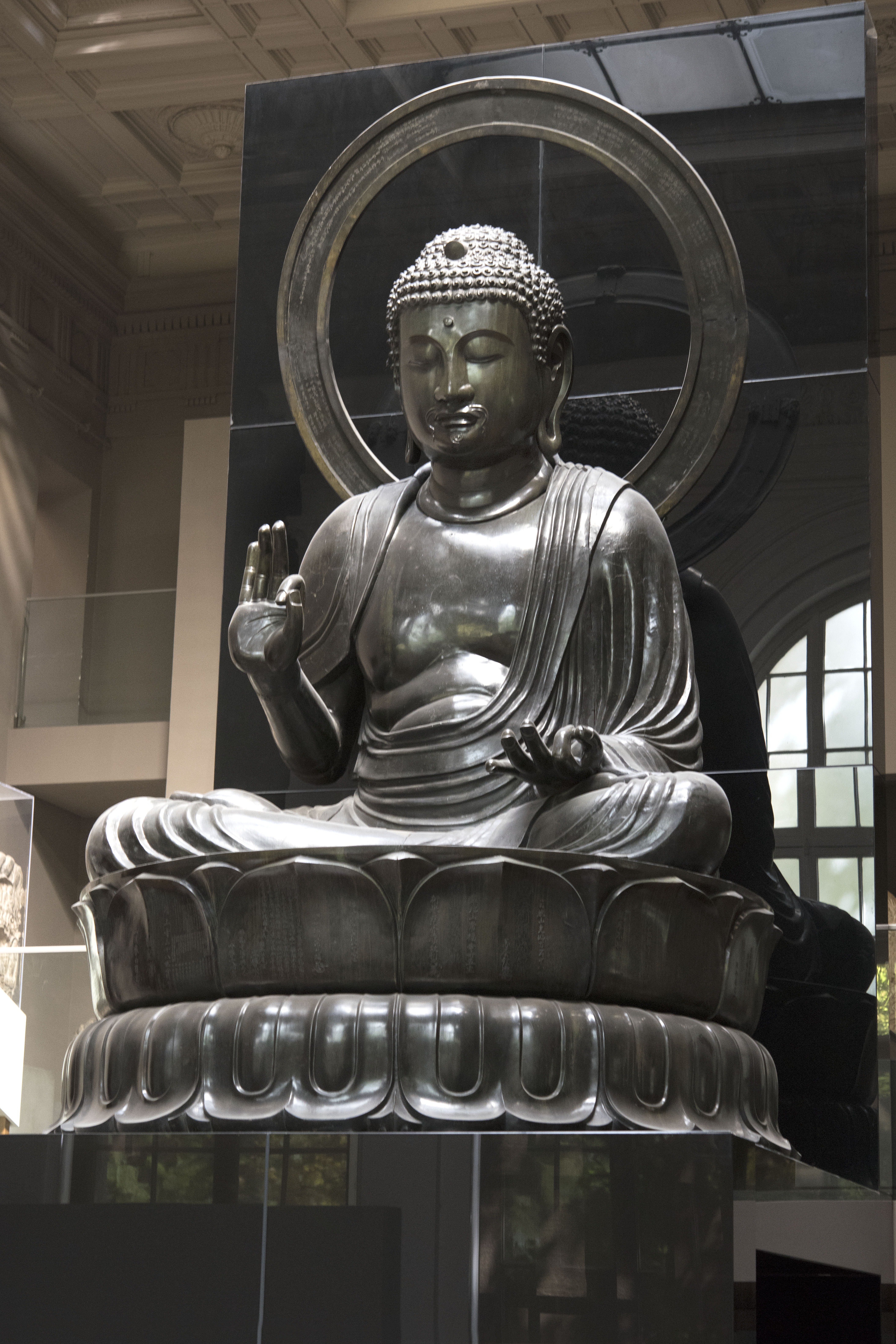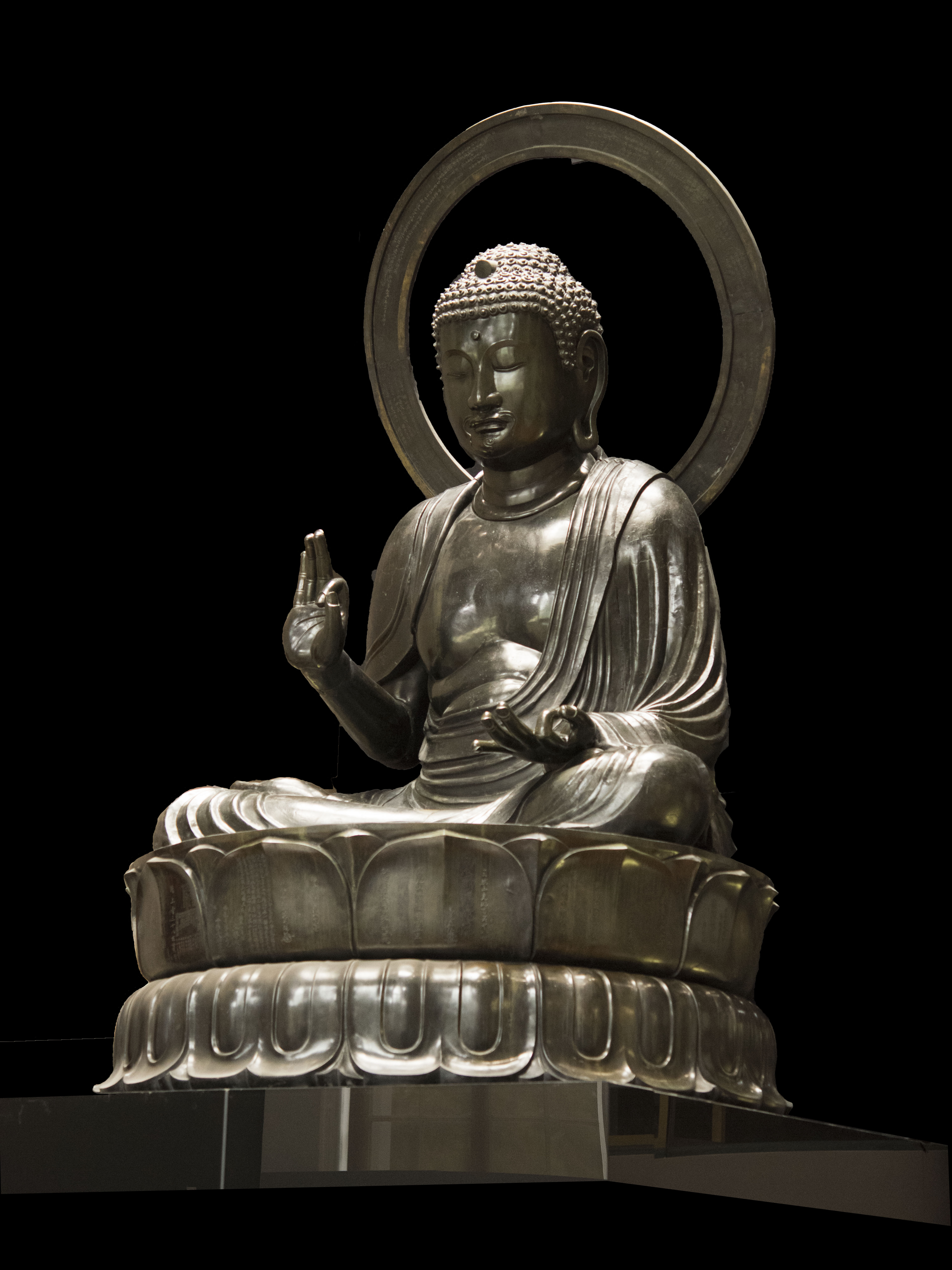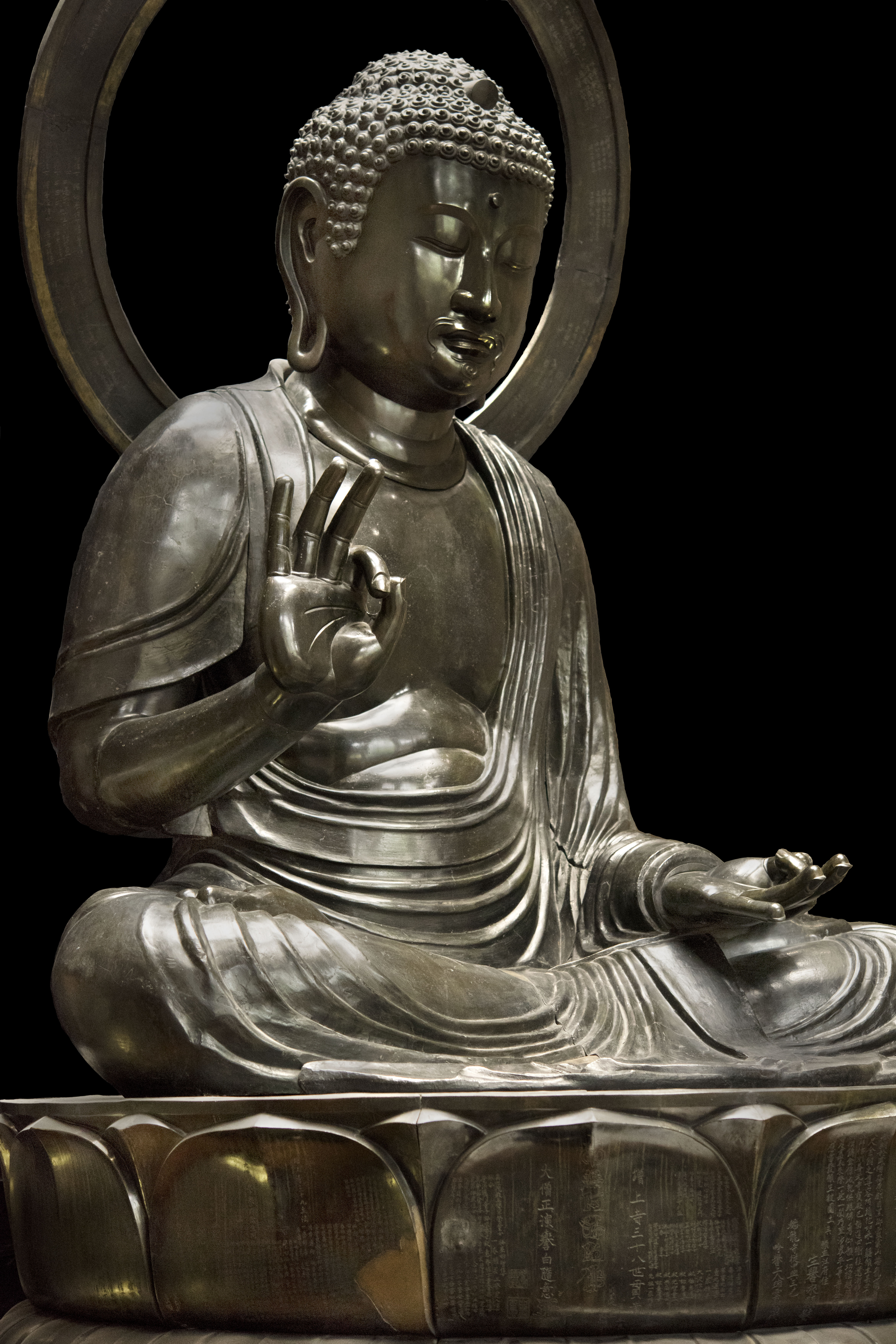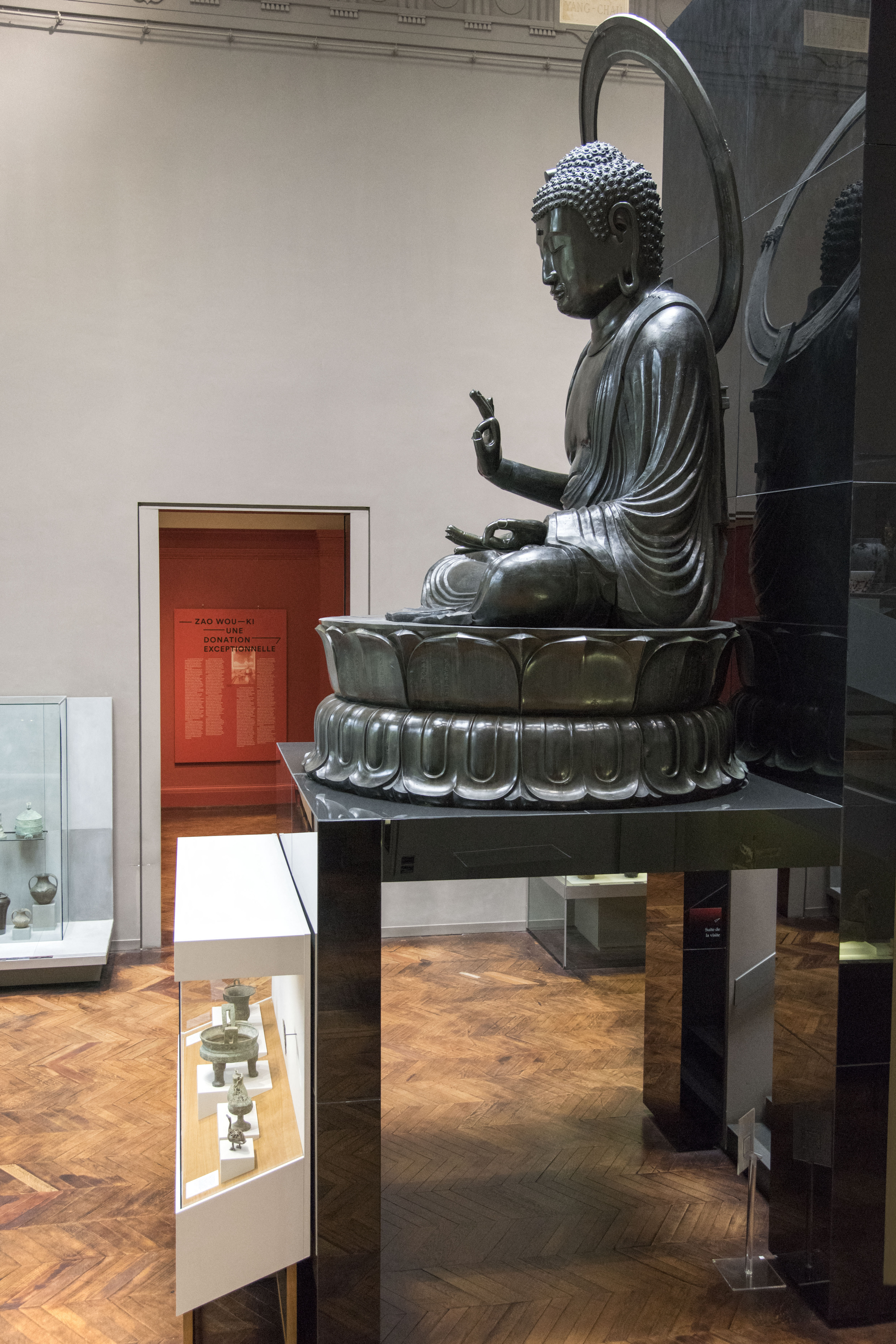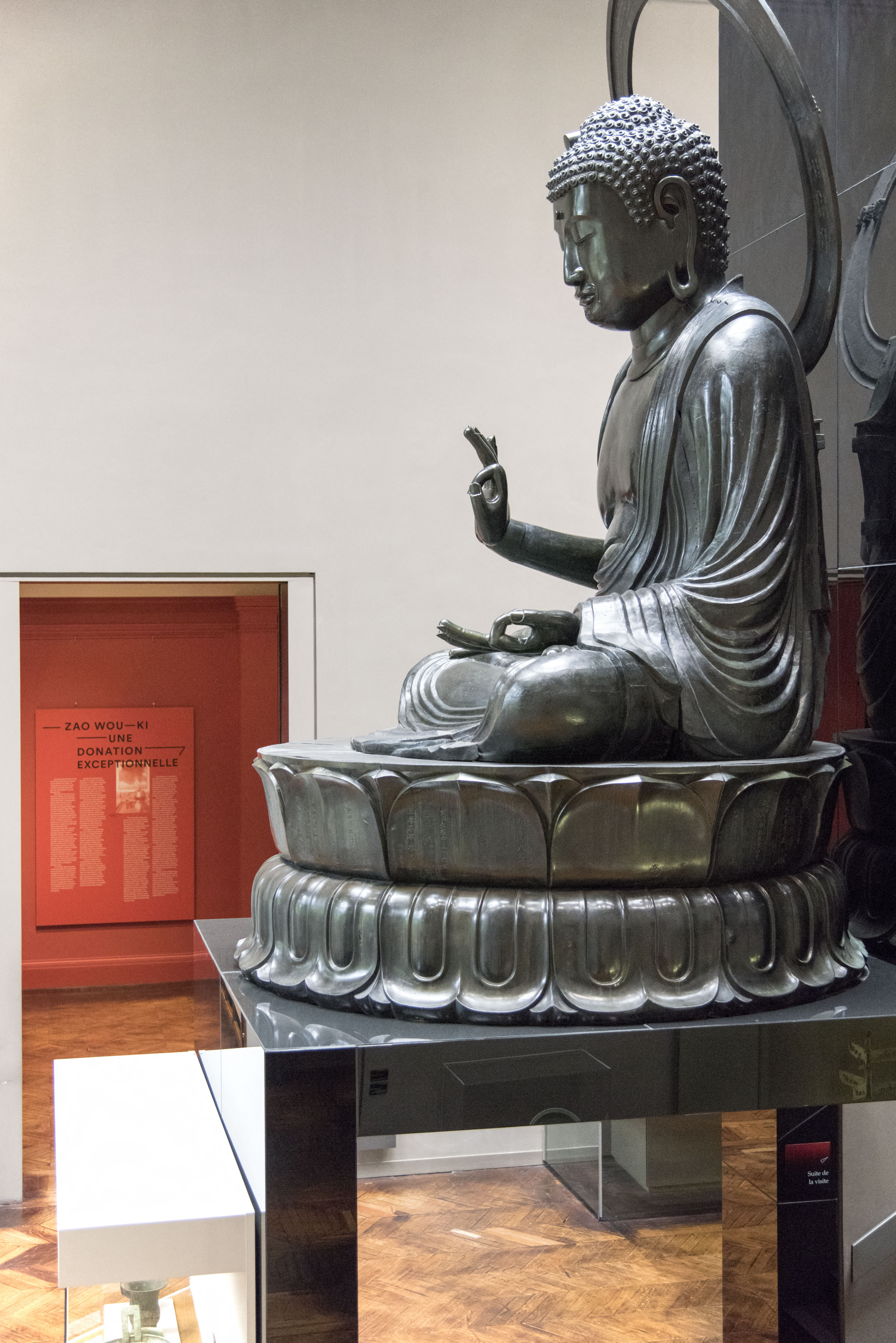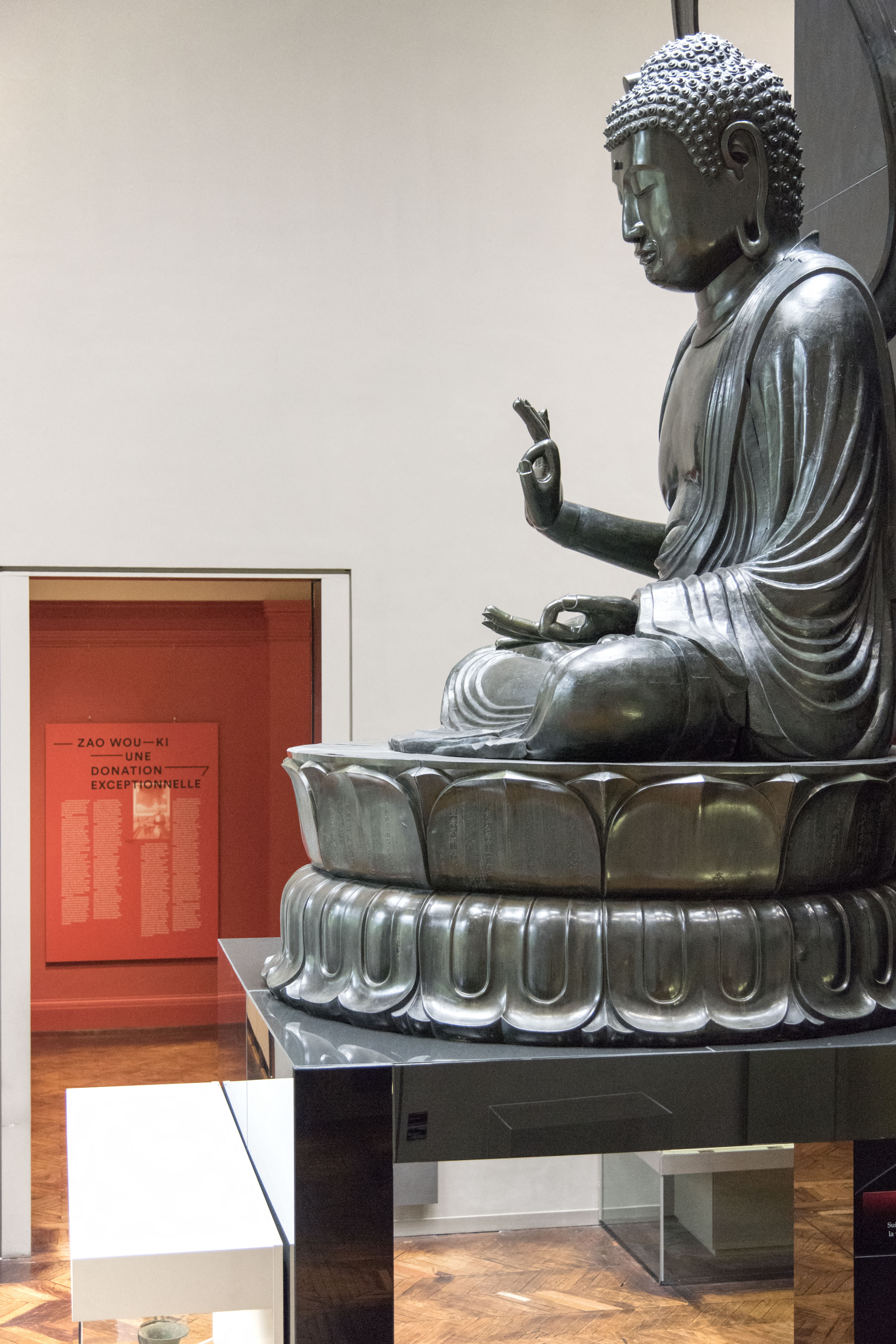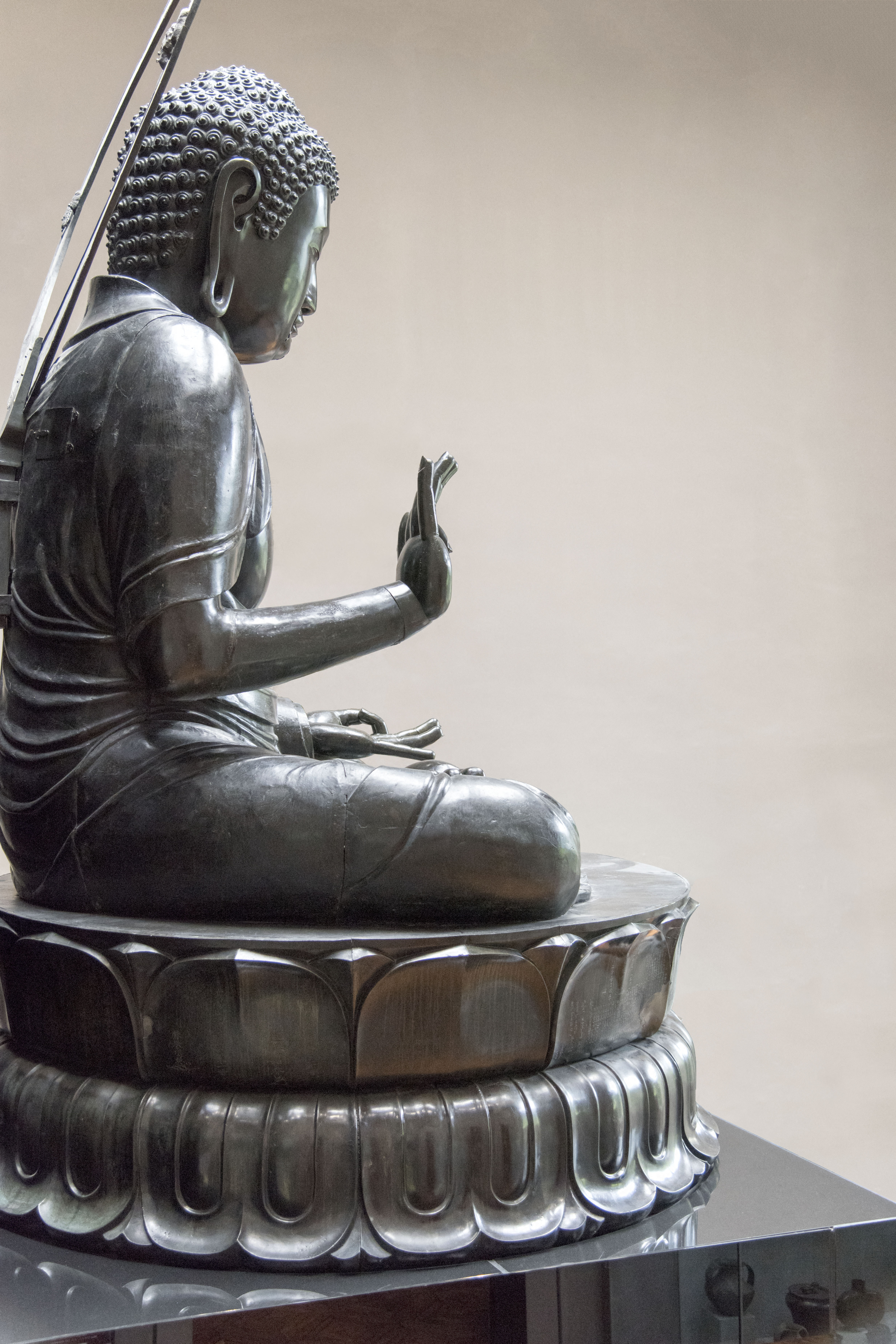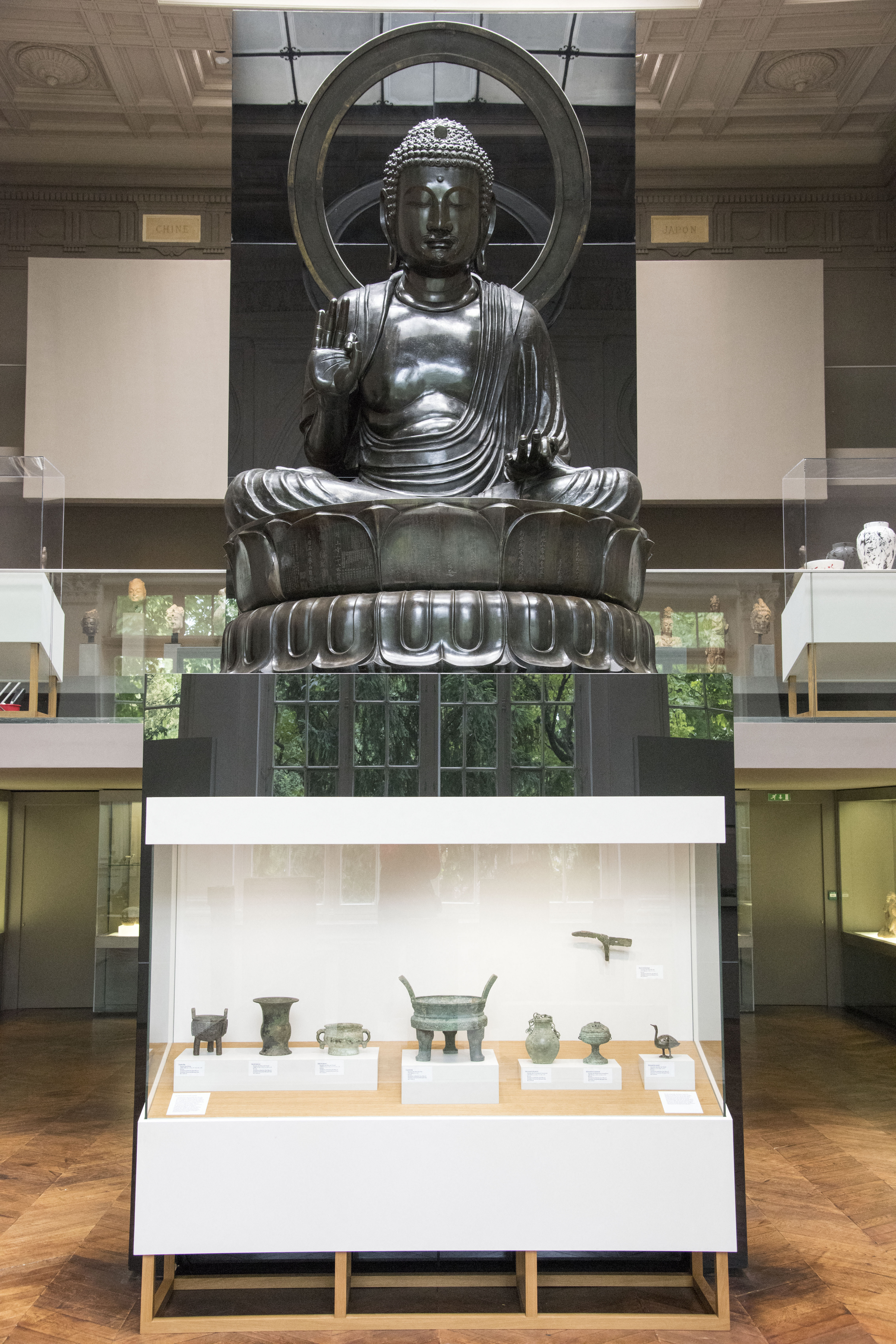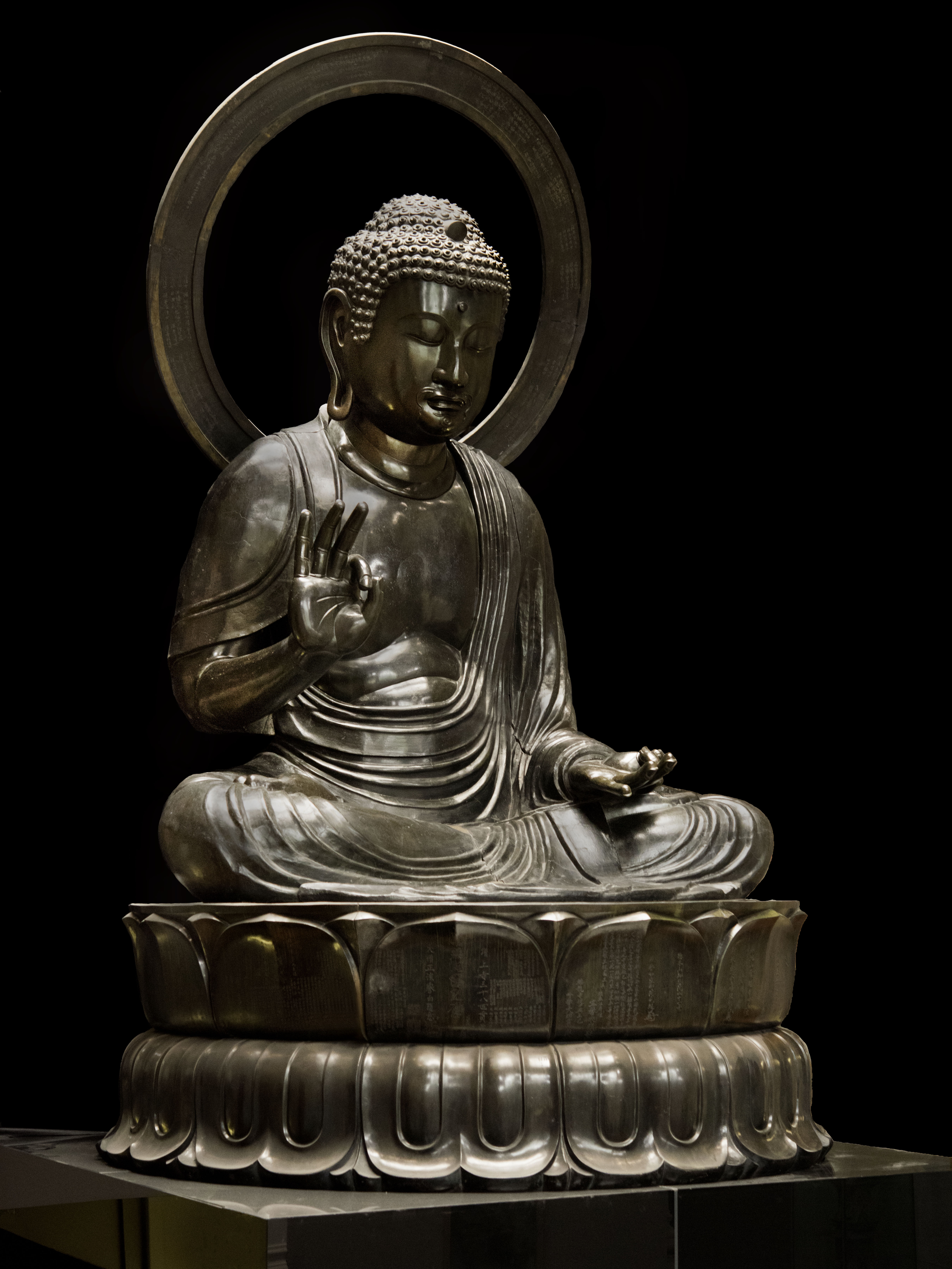
Buddha Amida (Amitābha)
Bronze
Statue
Le piédestal en forme de lotus et le nimbe comportent des inscriptions mentionnant les supérieurs des temples de l'école Jōdo.
Legs : Cernuschi, Henri
M.C. 2078
For over a century, the great statue of the Buddha Amida (Amitābha) sits, imperturbable, in the middle of the main room with its great windows in the mansion on Avenue Vélasquez, drawing the visitors’ gaze and enveloping them in its peaceful aura. After surviving the fire that destroyed the Banryūji, a small temple in the Meguro district of Tokyo, this statue remained for year in the open air in the midst of vegetation, before Cernuschi purchased it in 1871 for the amazing sum of 500 gold coins (ryō), convinced that it was, in the words of his travel companion, the art critic Théodore Duret (1838-1927), a “unique find”. Amida, the central figure of Pure Land Buddhism (Jōdokyō), is depicted seated on a lotus leaf, with raised right hand, palm facing forward, thumb and index finger touching. This gesture (vitarka mudrā) symbolises the energy of teaching and intellectual argument.
This reassuring Amida numbers among the great Japanese bronze statues to be found outside of the Japan. It was executed using a complex assembly technique, and dismantled to be transported to Paris, where the Barbedienne workshop reassembled the various parts – all dating from the 18th century – with the exception of the halo, which was probably damaged by the fire.
Michel Maucuer (Musée Cernuschi), Henri Cernuschi 1821 – 1896, voyageur et collectionneur, Paris, Paris Musées, 1998. p. 98, ill. p.99.
Shigemi Inaga, "Theodore Duret and Henri Cernuschi : journalisme politique, voyage en Asie et collection japonaise", in Ebisu, special issue, winter 1998. pp. 79-94.
